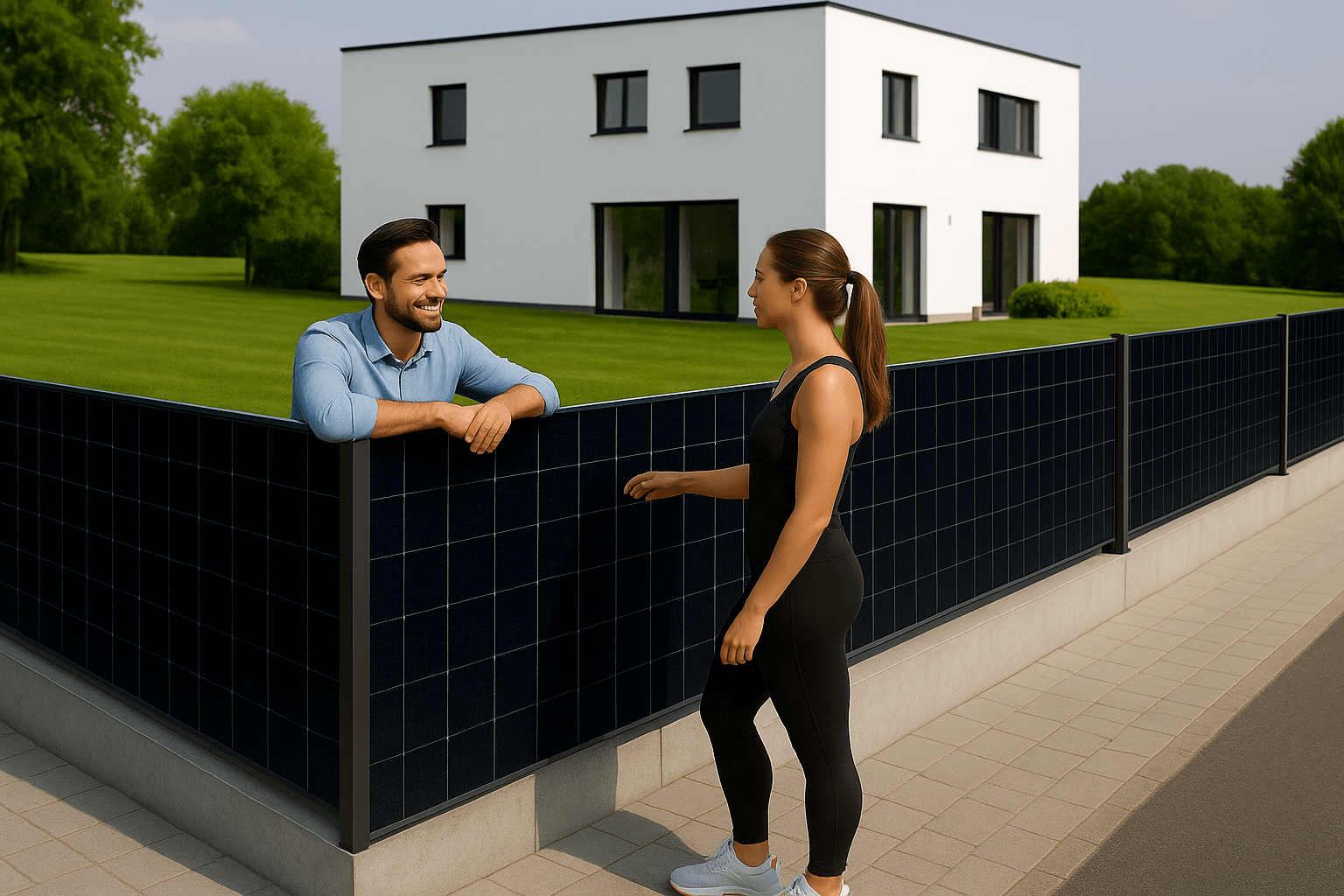Physical Address
304 North Cardinal St.
Dorchester Center, MA 02124
Physical Address
304 North Cardinal St.
Dorchester Center, MA 02124

As land constraints and design-conscious construction trends reshape the solar landscape, a new innovation is quietly gaining momentum. German mounting specialist ClickCon has launched ClickWall , a sleek, freestanding solar fence system that transforms underutilized property lines into productive, power-generating assets.
While rooftop solar remains dominant, ClickWall addresses a crucial gap: not every site has the right roof, and many rooftops are already taken. That’s where vertical solar comes in and this time, it’s not an afterthought.
ClickWall is more than just a fence with solar panels bolted on. It’s a complete, modular system engineered from the ground up to serve both as a privacy barrier and a photovoltaic energy source. Built from corrosion-resistant aluminium and designed to accommodate standard framed PV modules, it combines aesthetics, durability, and performance.
The system works particularly well with bifacial double-glass modules, which can generate electricity from both front and rear surfaces, ideal for sites with reflected or diffuse light conditions. These panels are held in a precision frame supported by heavy-duty aluminium posts, giving the installation a clean, high-end architectural appearance.
One of ClickWall’s biggest strengths is its adaptability. The mounting system allows modules to be arranged:
Installation is simplified through pre-engineered base plates for mounting on existing foundations. For sites with unique needs like point footings or angled terrain, additional anchor and bracket options are available.
Modules can also be removed individually for service or replacement, without disturbing the structural posts. This reduces downtime and simplifies maintenance.
ClickWall isn’t just plug-and-play in appearance, it’s thoughtful under the surface too. Integrated cable routing is hidden behind matching aluminum covers, protecting against tampering or accidental contact and preserving the system’s clean look.
For added intelligence, the posts are designed to house power optimisers, which:
In essence, ClickWall turns every metre of your fence into a productive, protective, and intelligent part of your energy system.
ClickWall is a compelling alternative where rooftop installations aren’t feasible due to shading, orientation, structural limitations, or regulatory constraints. It’s also a great supplemental system for homeowners or businesses that already have solar but want to increase generation capacity without adding bulk to their roof.
From a performance standpoint, while vertical PV typically produces slightly less midday energy than optimally tilted arrays, this loss is partially offset by bifacial gain, better shade tolerance, and reduced maintenance. Vertical orientation also means less dust and snow buildup, and easier cleaning.
What sets ClickWall apart is not just its function, but its form. As a privacy screen, it blends into residential and commercial spaces. As a power system, it adds measurable ROI. And as a design element, it elevates how we think about distributed solar, moving energy generation into parts of the built environment that previously sat idle.
ClickCon’s direct-to-customer launch began in September this year, with availability through the Krannich Shop. Interested users can pre-reserve systems by submitting their preferred module datasheets, layout plans (e.g., straight, corner, freestanding), and site details to receive a tailored quote.
ClickWall is part of a growing class of solar infrastructure that blurs the line between passive architecture and active energy systems. By reimagining a simple boundary into a multi-functional asset, it offers a smart, sustainable path forward, especially for homeowners, developers, and planners looking to extract more value from every square metre.
The future of solar might not just be on your roof. It could be around your yard.